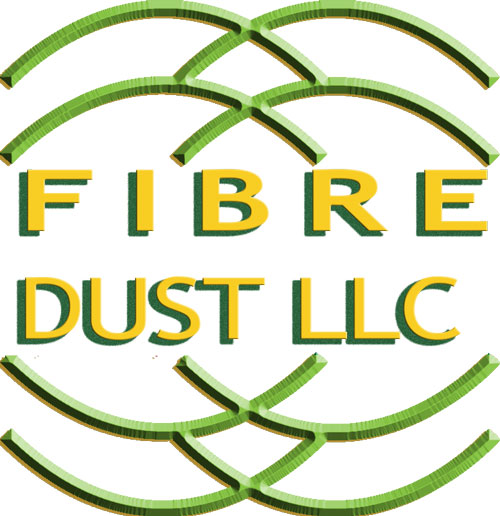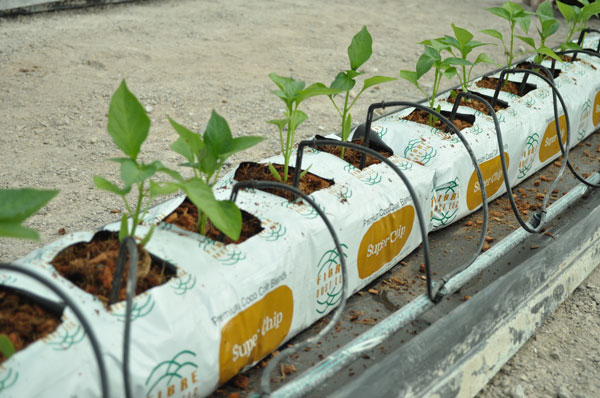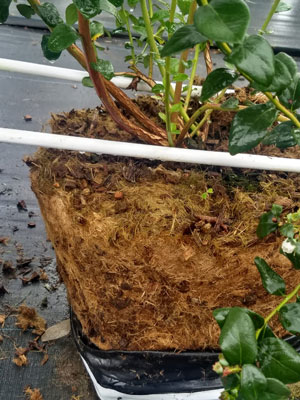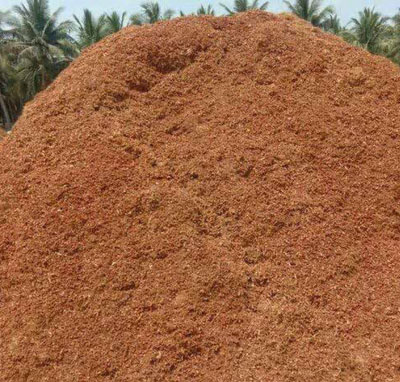6/1/2023
Other Options
Andrew Pidgeon

Cocopeat, also known as coir pith or coconut coir, is a by-product of the extraction of coconut fiber. It’s a natural, renewable resource made from the fibrous husk of the coconut. Cocopeat is an excellent plant growing medium for many reasons and is increasingly becoming a staple for the hydroponic gardener and CEA (controlled environment agriculture), as well as soil mixers across the globe.
It has a high water-holding capacity, which means it can retain moisture for an extended period of time, providing plants with a consistent source of water. Typically, cocopeat retains water six to eight times better than soil, which is essential for maintaining the moisture levels in the growing medium. Overwatering, a problem that has plagued growers, can result in waterlogged conditions that impair aeration. By storing water, cocopeat lessens the occurrence of overwatering by storing water in its tubular structure for delivery to the plant as needed. This makes it especially useful for plants that are heavy water feeders, like vegetables, herbs, flowering plants and medicinal crops. Furthermore, because cocopeat has a high porosity, it allows for good aeration and drainage, promoting healthy root growth.
Cocopeat's aeration capacity is one of its most important characteristics. Aeration is the capacity of the growing medium to permit air to circulate around the plant's roots. Proper aeration is crucial for plant health because it ensures that the roots have access to oxygen, which is required for respiration.
 Due to its high porosity, cocopeat has remarkable aeration qualities. It has a low bulk density, so it can hold a great deal of air between its particles. This allows for adequate air circulation around the plant's roots, which is necessary for healthy growth. Excellent aeration coupled with high water-holding capacity makes cocopeat a great alternative to peat moss and other commonly used growing mediums.
Due to its high porosity, cocopeat has remarkable aeration qualities. It has a low bulk density, so it can hold a great deal of air between its particles. This allows for adequate air circulation around the plant's roots, which is necessary for healthy growth. Excellent aeration coupled with high water-holding capacity makes cocopeat a great alternative to peat moss and other commonly used growing mediums.
Pictured: Cocopeat offers veggies a great start.
There have been numerous investigations into the aeration properties of cocopeat. Cocopeat has greater air-filled porosity and a lower bulk density than peat moss, a common growing medium, according to a study published in the Journal of Environmental Science and Health, which showed cocopeat had a greater air capacity than other growing media, such as perlite and vermiculite.
Another important component for cocopeat is lignin content. Lignin is a complex organic polymer. It’s necessary for structural support and acts as a barrier against pathogens and other stresses. However, lignin is a highly stable and resistant compound that decomposes slowly, making its degradation in the environment difficult.
Depending on variables—such as the age of the coconut, the processing method and the quality of the raw material—the lignin content of cocopeat can vary. The lignin content of cocopeat ranges from 5% to 15% (dry weight basis) according to research (Ravindranath and Sivakumar, 2013).
 For instance, Sivakumar and colleagues (2006) discovered that the lignin content of cocopeat samples varied from 5.4% to 7.8%, with a mean value of 6.5%. In another study, Thamban and Nair (2008) found that cocopeat samples contained 8.4% lignin.
For instance, Sivakumar and colleagues (2006) discovered that the lignin content of cocopeat samples varied from 5.4% to 7.8%, with a mean value of 6.5%. In another study, Thamban and Nair (2008) found that cocopeat samples contained 8.4% lignin.
Pictured: Cocopeat, also called coconut coir, is a renewable, organic medium.
Cocopeat's low lignin content provides numerous benefits for plant growth. First, it decreases the likelihood of nitrogen immobilization in the soil. Lignin takes longer to decompose than other organic matter, and during decomposition, it can bind nitrogen in the soil, rendering it unavailable to plants. Due to its low lignin content, cocopeat decomposes and releases nitrogen more quickly, promoting plant growth.
Cocopeat is an excellent substrate for beneficial microorganisms, such as mycorrhizal fungi, due to its low lignin content. Mycorrhizal fungi form symbiotic relationships with plants, exchanging carbon from the plant for nutrients such as phosphorus. Mycorrhizal fungi are known to flourish in substrates with a low lignin content, and their presence can enhance plant growth and health.
Furthermore, cocopeat is an excellent substrate for hydroponic systems due to its low lignin content. Hydroponic systems expose plant roots to water and nutrients, while the substrate serves primarily to anchor the plants. Cocopeat's low lignin content prevents it from interfering with the chemistry of the nutrient solution, making it an ideal growing medium for hydroponics.
Cocopeat is also an eco-friendly alternative to peat moss, which many consider to be a non-renewable resource harvested from peat bogs and wetland areas, and causes significant environmental damage. Cocopeat, on the other hand, is made from coconut waste and doesn’t require the harvesting of natural resources, reducing the demand for peat moss and contributing to the reduction of waste by being easily compostable.
 Pictured: Cocopeat is an excellent substrate for blueberries.
Pictured: Cocopeat is an excellent substrate for blueberries.
In addition, cocopeat is an adaptable and inexpensive growing medium that can be utilized for seed starting and container gardening. Due to its widespread availability in coconut-producing Southeast Asia, India and Sri Lanka, it’s an inexpensive option for small-scale farmers and home gardeners. Cocopeat is likely to remain a popular option for many years to come, as the demand for eco-friendly and sustainable growing media continues to rise.
Overall, because of its numerous advantages for plants and the environment, cocopeat is an excellent alternative to traditional peat moss. As the demand for environmentally friendly and sustainable growing mediums grows, cocopeat is likely to remain a popular option for many years to come. GT
Andrew Pidgeon is Director of Marketing for FibreDust, LLC.